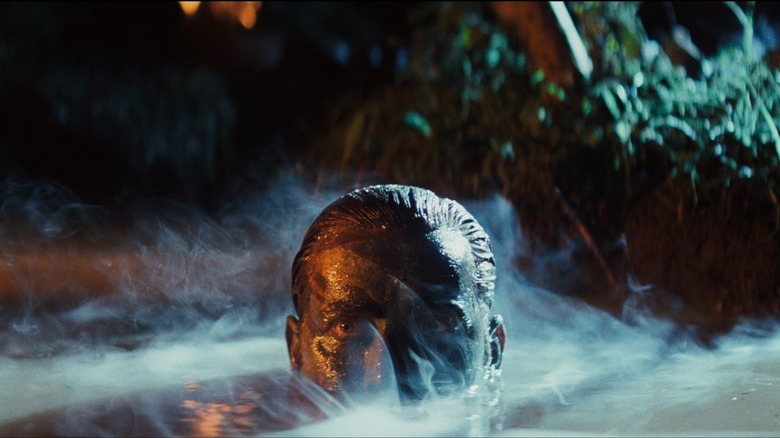
Out of all the New Hollywood directors to launch their careers in the late 1960s and early 1970s, Francis Ford Coppola is without a doubt one of the most famous. This is partially a result of his string of hits throughout the 1970s, many of which are serious contenders in any conversation about the best films ever made. But when you talk about Francis Ford Coppola, you also have to discuss the veritable film dynasty he would become the head of — it's sort of like "The Godfather," only with a bunch of creative types instead of mobsters. The Coppola cinematic family includes Sofia Coppola, Nicolas Cage, Jason Schwartzman, and Talia Shire, amongst others.
But apart from his family legacy, Coppola's contributions as a director stand on their own merits. Although his output after the 1970s is less consistent than his earlier work, when he's at his best, he makes movies at a level that no one can compete with.
Jack
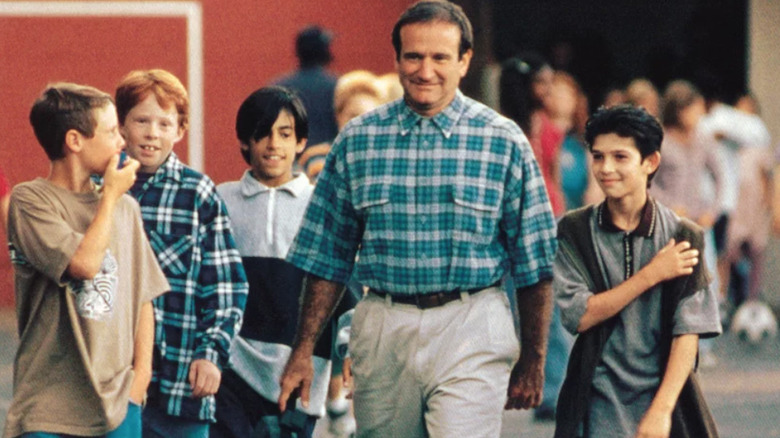
Most of Francis Ford Coppola's films, even if they're flawed in some way, usually have some redeeming qualities that make them worth watching. Not so with "Jack" -- it's pretty much a misfire on every conceivable front. That's a shame, because it would be amazing to have a collaboration between Coppola and Robin Williams where both artists, with their considerable creative gifts, are firing on all cylinders. But alas, it was not to be.
Williams stars as the titular Jack, a young boy stricken with a strange disease that makes him age at an accelerated rate. So, although Jack looks like he's pushing 40, he's actually more like a child of 10. It's clearly meant to be charming, but there's something immensely off-putting about the entire concept that turns audiences off from the very start. Tonally all over the place, "Jack" is well beneath the talents of both its director and star.
Finian's Rainbow
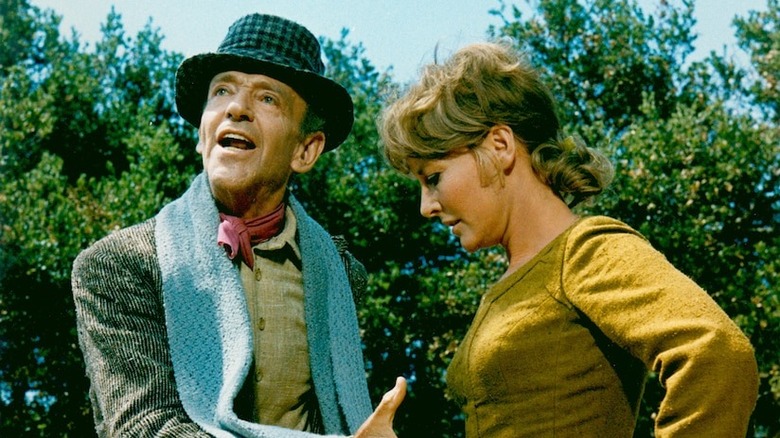
It's probably not quite fair to put "Finian's Rainbow" so low on the list. The goofy little musical has a certain charm, after all. But the bottom line is that it came out at exactly the wrong point in the 1960s, when people were starting to be over quirky, wholesome musicals after having spent an entire decade inundated with them.
Starring Fred Astaire, who was nearly 70 at the time of filming but still spry, "Finian's Rainbow" revolves around an Irish father and daughter who move to the American South after stealing a leprechaun's pot of gold. Although it was nominated for two Academy Awards, it's all but forgotten now. At this point, probably the most substantial thing to come out of "Finian's Rainbow" is that it was on this set that Francis Ford Coppola and George Lucas first met; the two would become lifelong friends and collaborators.
Dementia 13
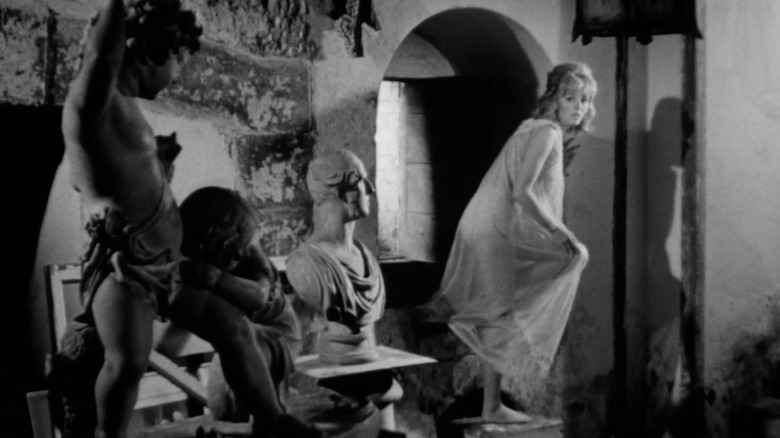
So, if we want to get all technical about it, "Dementia 13" isn't actually Francis Ford Coppola's first directorial effort. Back in the early 1960s, he got his start earning a little extra money by working on softcore films, sometimes shooting additional nude footage but more often re-editing already existing films. Anything to pay the bills, you know? But "Dementia 13" is his first legitimate film, a collaboration with Roger Corman, longtime producer of cheap independent horror films.
Attempting to capitalize on the success of Hitchcock's "Psycho," "Dementia 13" is a horror-thriller designed to combine gothic elements and gruesome modern murders. Despite Coppola's best efforts, Corman was unhappy with his initial cut, demanding that he add more violence and at least five minutes of additional screen time. The result is a campy, derivative affair, but one that many fans still find ultimately redeemable, especially with the recent release of a director's cut that restores "Dementia 13" to what Coppola had initially envisioned.
Gardens Of Stone
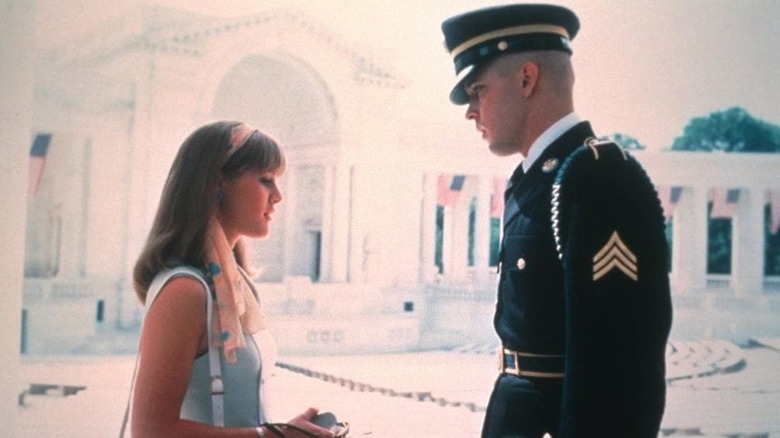
Some movies just have a shadow hanging over them. That's certainly the case with "Gardens of Stone," a drama set amidst the Vietnam War centered on a jaded sergeant (James Caan) who is faced with the heartbreaking burden of serving as a mentor to an idealistic young recruit about to be deployed. It belongs to a genre of 1980s anti-war films that serve as a counterpoint to the more overtly jingoistic movies like "Top Gun" and "Red Dawn."
But the film is colored by a tragic loss: In the middle of filming, Coppola's 22-year-old son Gian Carlo was killed in a boating accident. Coppola continued the production, and you can feel the poignancy, especially in the story of Jackie Willow's (D.B. Sweeney) ill-fated journey into Vietnam. However, the overall production is unfocused, a shortcoming that is evident in the final cut of the film. Elements of "Gardens of Stone" work in isolation, but when put together are somewhat less than the sum of its parts.
Twixt
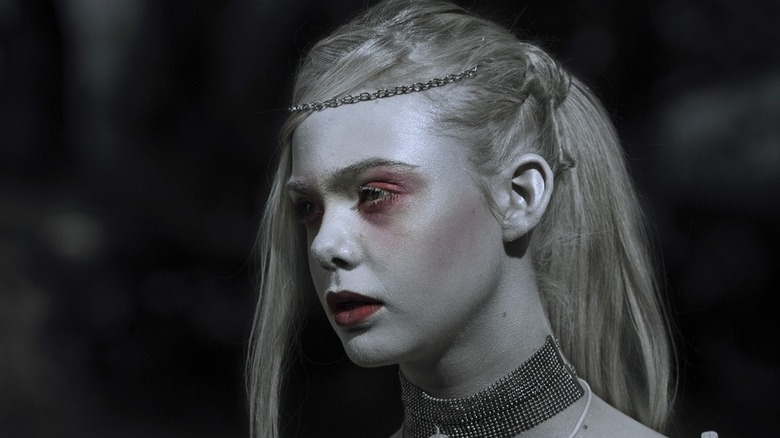
The older Francis Ford Coppola gets, the less interested he seems in traditional narrative storytelling. "Twixt," his 2011 directorial effort starring Elle Fanning, Val Kilmer, and Bruce Dern, is abstract and dreamlike almost to the point of incomprehensibility. Following the exploits of a down-and-out writer who is able to walk between reality and a strange illusory version of the world, it introduces various fragmented plotlines involving a vampire, Edgar Allen Poe, and a child-murdering priest.
Coppola leans into the metaphysical aspects of the story, but it isn't nearly as clever as it thinks it is, and there's not enough material of substance to make the audience stick with its wildly meandering plot. "Twixt" did poorly at the box office in nearly every market where it was released except, interestingly enough, France, where it was well-received; film journal "Cahiers du Cinéma" even listed it amongst the year's best movies.
One From The Heart
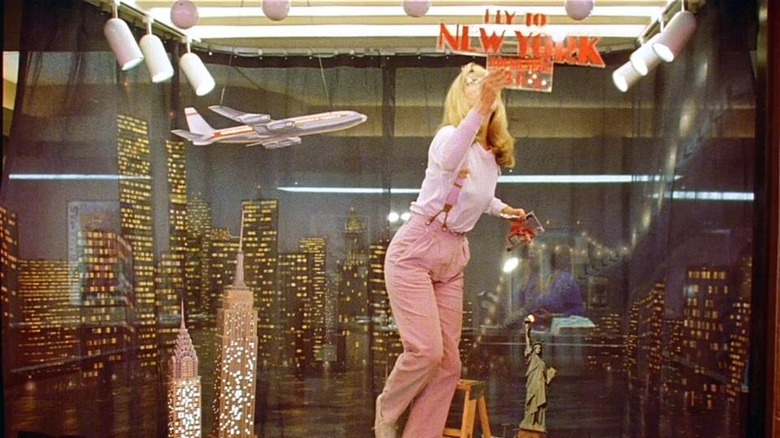
The beginning of the original trailer for "One from the Heart" lists some of the films from Francis Ford Coppola that came before it: "The Godfather," "Apocalypse Now," and "The Godfather Part II." In some ways, that sums up exactly why "One from the Heart" failed to connect with audiences. After those towering achievements in American cinema, viewers were unprepared for and underwhelmed by what is nothing more or less than a decent musical romance.
Given that mainstream audiences were only familiar with Coppola's 1970s work, steeped in epic mob violence and war imagery, it may have been difficult to embrace a totally different side of Coppola. "One from the Heart" stars Frederic Forrest and Teri Garr as a couple who break up on their fifth wedding anniversary and spend the night with someone else. It was a certified box office bomb and all but killed Coppola's Zoetrope Studios, which would flounder for the rest of the decade before finally filing for Chapter II bankruptcy in 1992.
Youth Without Youth
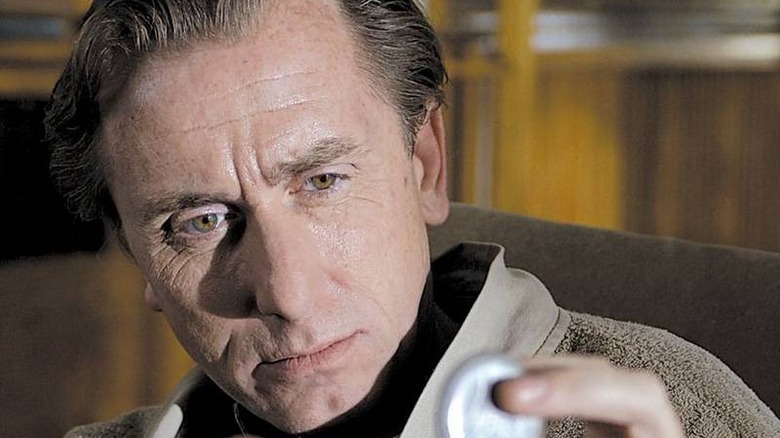
Like many filmmakers, upon reaching a certain age Francis Ford Coppola became interested in interrogating the past. "Youth Without Youth" is not just an examination of time and the process of aging, but a poetic exploration of the generation that came before him. It was the first film that Coppola had released in nearly 10 years, and it's clear that, in his passion for the story and eagerness to return to cinema, he packed the movie full of too many ideas, creating a philosophical parable that is poignant but slightly bloated.
Tim Roth stars as an elderly professor in the 1930s who, after being struck by lightning, undergoes a cellular regeneration process that instantaneously de-ages him. Suddenly younger and with unexpected psychic powers that make him a target for the Nazis, he escapes to Switzerland, where he meets a young woman who looks like a former lover from decades past. Needless to say, there's a lot going here, maybe too much. But on some level, you have to admire Coppola for leaving everything on the table.
You're A Big Boy Now
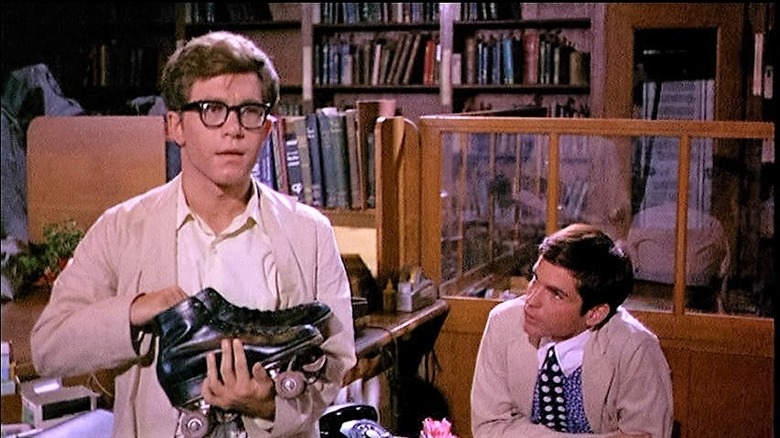
The late 1960s really couldn't get enough of stories about young men grappling with the pressures of adulthood. Coppola's "You're a Big Boy Now" was a forerunner for the trend, coming out a few years before Mike Nichols' groundbreaking "The Graduate." Coppola bought the rights to the David Benedictus novel the film is based on back when he was still in graduate school, and eventually filmed it as his thesis project.
"You're a Big Boy Now" stars Peter Kastner as Bernard, whom his overbearing parents refer to as "Big Boy," an emotionally stunted 19-year-old who struggles to start a life for himself. He is infatuated with a gorgeous young actress named Barbara Darling (Elizabeth Hartman), despite the fact that she treats him cruelly as a part of a very problematic man-hating scheme. Coppola's little coming-of-age picture would end up netting Geraldine Page, who plays Bernard's codependent mother, her fourth Oscar nomination. Not bad for a student film!
Tetro
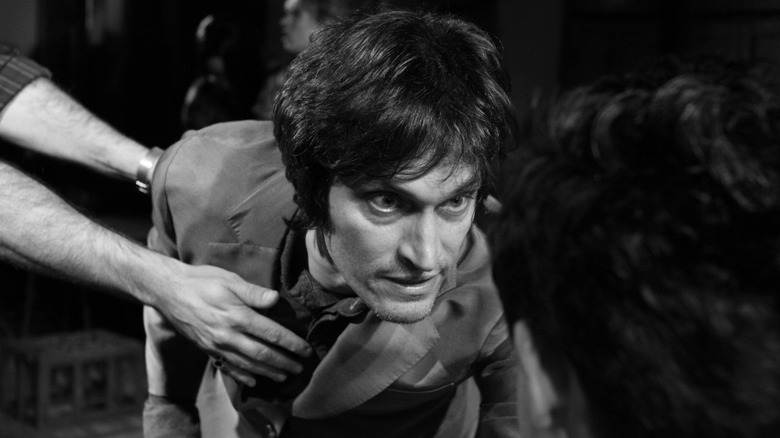
For "Tetro," Francis Ford Coppola's second film of the 2000s, he returned to a more straightforward style of filmmaking. Its storytelling is basic, but in the hands of an artist like Coppola, it's incredibly effective. Bennie (Alden Ehrenreich, in a role that would put him on Hollywood's radar) tracks down his estranged brother, a writer now going by the name of Tetro (Vincent Gallo), in Argentina. Their relationship is incredibly complicated, heightened by family drama and unresolved issues that have lingered for a generation.
In some ways, "Tetro" feels like a pared-down take on the epic sense of kinship in some of Coppola's earlier films. In addition to featuring the filmmaker's return to form (even if the overall film is slightly uneven), "Tetro" succeeds on the strength of its two leading performances: Gallo and Ehrenreich have an electric chemistry together, bringing an endlessly engaging quality to the production.
Tucker: The Man And His Dream
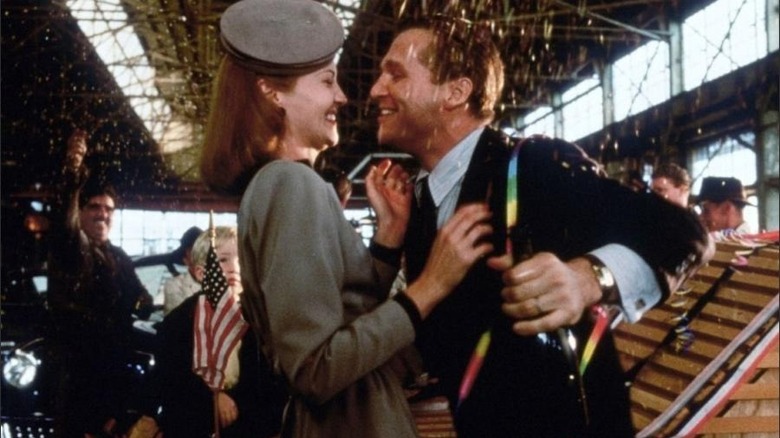
Throughout his career, Coppola has vacillated between traditional films and more avant-garde passion projects, but "Tucker: The Man and His Dream" is arguably the most conventional film he ever made. It also represents the only time in his career that he would direct a biopic, in stark contrast to his New Hollywood contemporary Martin Scorsese, whose filmography is peppered with fascinating historical figures.
"Tucker: The Man and His Dream" stars Jeff Bridges as Preston Tucker, an independent automaker whose vision for a "car of the future" would put him in direct conflict with the major car manufacturers of the day. It's a lighthearted, whimsical film that feels almost Capra-esque in its effort to show the little guy fighting for what rightfully belongs to him against greedy corporate interests. The ultimate effect is charming, even if it frequently lacks the depth of some of Coppola's more famous works.
The Godfather Part III
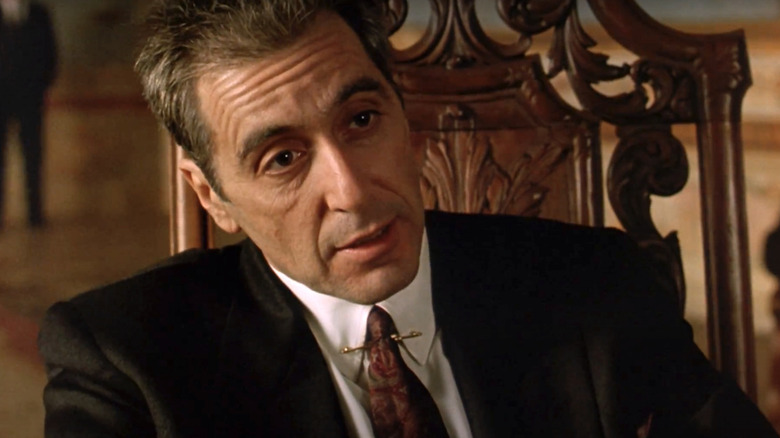
"The Godfather Part III" gets a pretty bad rap. And really, how could it not? Look at what it's being compared to. But the fact of the matter is that, while "The Godfather Part III" has its fair share of flaws, any addition to the Godfather saga is going to be head and shoulders above most mainstream cinema. Maybe it's fair to call it imperfect, but it's also unfairly maligned.
The movie picks up several years after "The Godfather Part II" left off. Michael Corleone (Al Pacino) has aged dramatically, and is weary of the Mafia world he's been entrenched in for decades. Michael would like to leave a legitimate family business behind as his legacy, but getting out of the criminal underworld is easier said than done. "The Godfather Part III" has long been held up as an example of a weak third act of a celebrated trilogy; Coppola himself attempted to rehabilitate this image by releasing a slightly recut version of the film in 2020, evidently hoping that time and a little bit of emotional distance would allow viewers to see "The Godfather Part III" with fresh eyes.
The Rain People
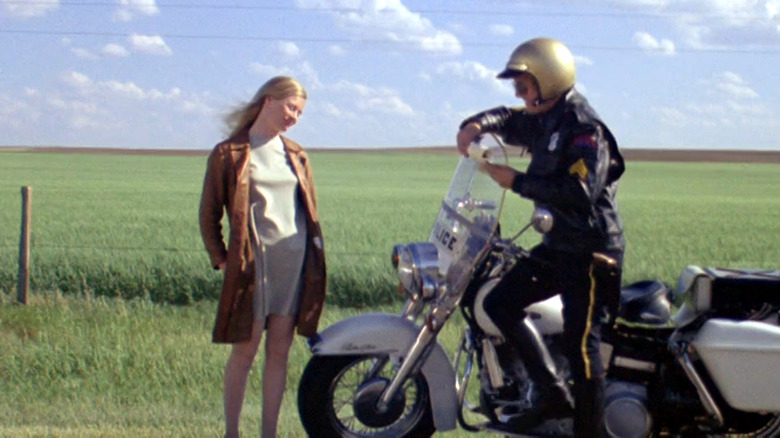
If "Dementia 13" was Coppola's first legitimate film, and "Finian's Rainbow" was his first studio picture, "The Rain People" represents the first time he was able to experiment artistically. It features Shirley Knight as a sexually liberated young woman who leaves her husband and picks up a handsome but mentally incapacitated ex-college football player (James Caan) for the purposes of having a one-night stand with him. Throughout the film, she sets the agenda, dictating how their relationship unfolds and eventually becoming involved with a highway patrolman (Robert Duvall.)
In exploring intimate, deeply personal dynamics between individuals, "The Rain People" captures the essence of a rapidly changing culture in a way that mainstream cinema had struggled to do earlier in the decade: to serve as a mirror of society rather than a distraction from it. There's never really been a firm consensus on where "The Rain People" stands in Coppola's filmography. But whether it's good or bad is almost beside the point. It's interesting, which is more important.
The Rainmaker
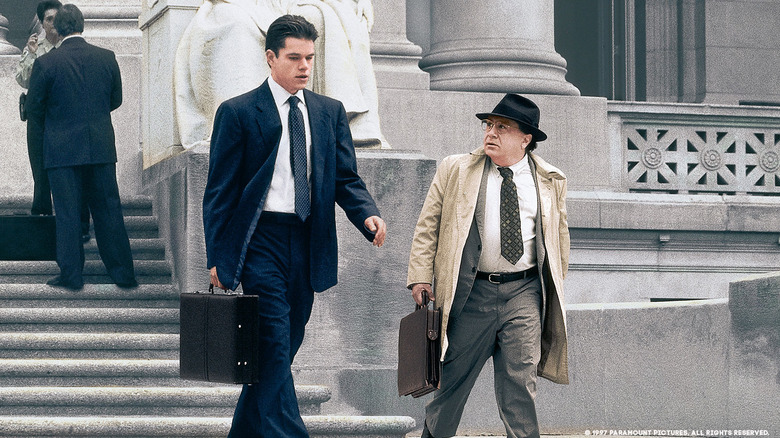
In the mid-1990s, every major director seemed to have been contractually obligated to direct at least one John Grisham adaptation. "The Rainmaker" is Coppola's, and it's one of the best of the tense legal thrillers that were popular at this time. Matt Damon plays Rudy Baylor, a young lawyer who has just passed the bar and is mentored by the jaded Deck Shifflet, an unethical ambulance chaser (Danny De Vito.)
This being a Grisham story, it isn't long before Rudy catches wind of a lawsuit involving a predatory insurance company and decides to join the case, even if it means putting himself in the line of fire as the unscrupulous forces in power attempt to get the petition dismissed by any means necessary. It's a cynical look at the American justice system, and although it lives and dies by the limitations of the genre, Coppola is able to coax an unusually compelling film out of what could otherwise be little more than a formulaic legal drama.
Bram Stoker's Dracula
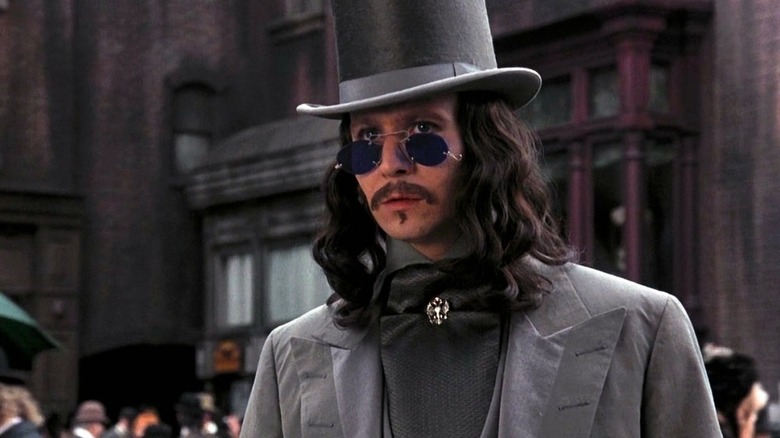
If there's one genre that Francis Ford Coppola isn't traditionally linked to, it's horror. That's a shame, because his one major foray into the spookier side of things is actually a lot of fun. We are talking, of course, about "Bram Stoker's Dracula," an interpretation of the iconic vampire story that somehow manages to feel both innovative and traditional. With a rich Gothic backdrop and a strangely alluring Gary Oldman in the lead role, Coppola visually redefines the horror story that for so long had been content to follow in the footsteps of Bela Lugosi, incorporating vampiric lore that had been left out of previous adaptations of "Dracula."
Notably, this is a rare horror film to receive attention at the Academy Awards, winning best costume design, best sound effects editing, and best makeup. Look, is it Keanu Reeves' best outing as an actor, trying to fumble his way through a dodgy English accent? No. But in the story of "Dracula," Jonathan Harker doesn't really matter, anyway: we're here for the count.
The Cotton Club
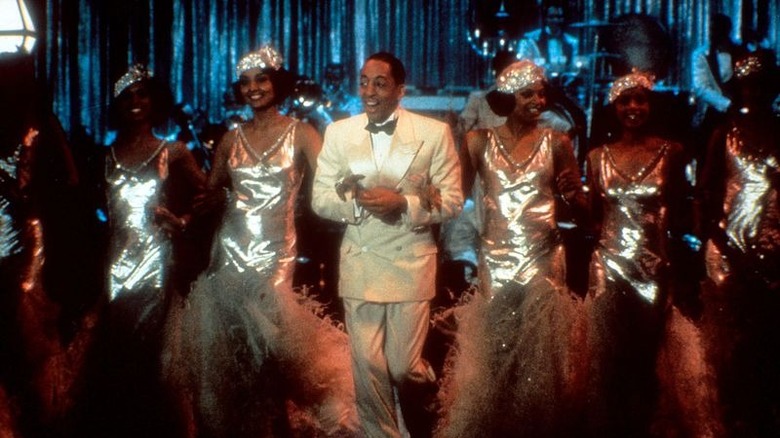
Francis Ford Coppola seems to embrace one of two modes when he's at his best as a director: either a sweeping, epic scale, or something more intimate and contemplative. There's very little middle ground. "The Cotton Club" falls firmly into the former category. Coppola was never going to do a painstakingly executed tribute to the Harlem Renaissance of the 1920s and 1930s on the cheap, and it is for this excess that the film is best known today. The budget ballooned from a respectable $20 million to over $40 million, eventually earning just over half of that back.
With such a budget, it was incredibly unlikely that "The Cotton Club" would be a financial success, but from an artistic perspective there's a lot to like. Aside from the lush period details that bring a Harlem jazz club at its peak to life, it features strong performances from its main cast, and manages to blend the crime drama that Coppola was known for with a vibrant historical setting.
Rumble Fish
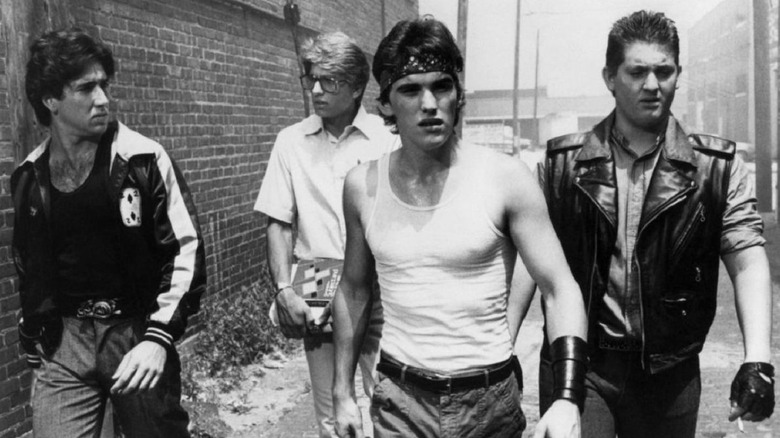
The second of two S.E. Hinton adaptations from Francis Ford Coppola released in 1983, "Rumble Fish" stars Matt Dillon as the leader of a teen gang. He idolizes his older brother (Mickey Rourke) for his fearsome reputation, while his brother longs for a more peaceful life. Unlike many teen films from the period, which tend to be bright and overtly commercialized, Coppola films "Rumble Fish" almost as an art house movie for teenagers. Shot in black and white, it feels at least partly inspired by Peter Bogdanovich's "The Last Picture Show."
"Rumble Fish" has considerably less mainstream appeal than "The Outsiders," which Coppola filmed while he was collaborating with Hinton on the screenplay for "Rumble Fish," but it is by far the more creatively ambitious of the two films. Although it was not a commercial success, "Rumble Fish" represents some of Coppola's most personal filmmaking: He dedicated the film to his older brother August, and drew inspiration from their relationship.
Apocalypse Now
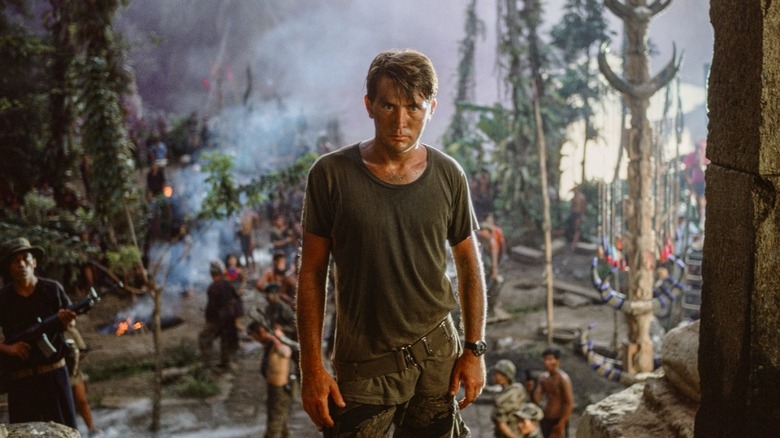
There's no other way to describe it: "Apocalypse Now" is an assault on the senses. A trippy, cynical adaptation of Joseph Conrad's "Heart of Darkness" that exchanges the colonization of sub-Saharan Africa for the jungles of Vietnam, Coppola constructs a violently disturbing portrayal of the madness of war. Martin Sheen stars as a young soldier tasked with eliminating the threat posed by a rogue colonel, the elusive Kurtz (Marlon Brando.)
"Apocalypse Now" embodies a sense of chaos that would epitomize the Vietnam War, and part of that is thanks to Coppola's talent as a filmmaker. But it's likely also related to the simple fact that the set itself was embroiled in utter turmoil from day one. The problems on set were legion and well-documented: A typhoon caused significant damage to filming locations, Marlon Brando turned up overweight and underprepared, having not bothered to learn any of his lines, Martin Sheen suffered a heart attack at age 36, and Coppola himself was driven into a major depressive episode. But all their torments yielded what is perhaps the greatest war film ever made, so at least they didn't go through hell in vain.
The Outsiders
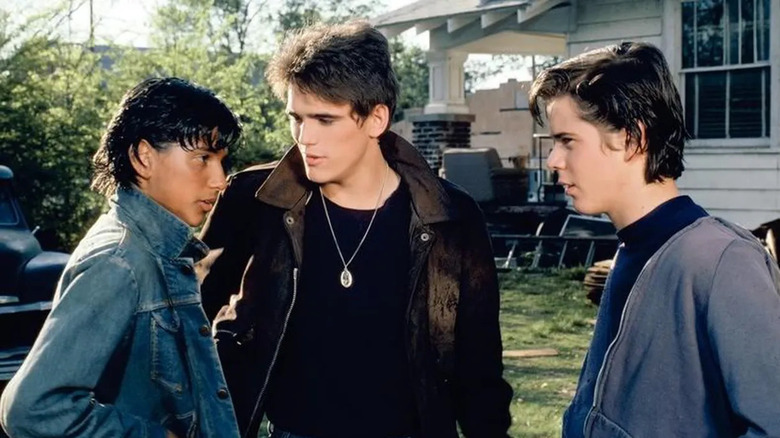
If for no other reason, Coppola's adaptation of S.E. Hinton's classic young adult novel "The Outsiders" deserves credit for the sheer number of careers that it launched. In building the tight-knit group of Oklahoman hoods called the Greasers, Coppola assembled a cast of actors who would go on to become stars and define the decade: Ralph Macchio, Matt Dillon, C. Thomas Howell, Patrick Swayze, Rob Lowe, Emilio Estevez, and Tom Cruise. Pretty much a murderers' row of 1980s teen heartthrobs. The Greasers would perpetually battle the upper-class "socs," a conflict that goes tragically awry when one of the Greasers accidentally kills a soc in the middle of a street fight, leading him to go on the run.
Coppola's version of "The Outsiders" blends nostalgia with a new way of depicting the complex inner lives of teenagers, especially kids from the wrong side of the tracks, which would in some ways serve as a precursor to the explosion of teen films throughout the 1980s. It was successful upon its initial release, thanks largely to the charismatic performances from its young cast, and is one of Coppola's most approachable films.
The Conversation
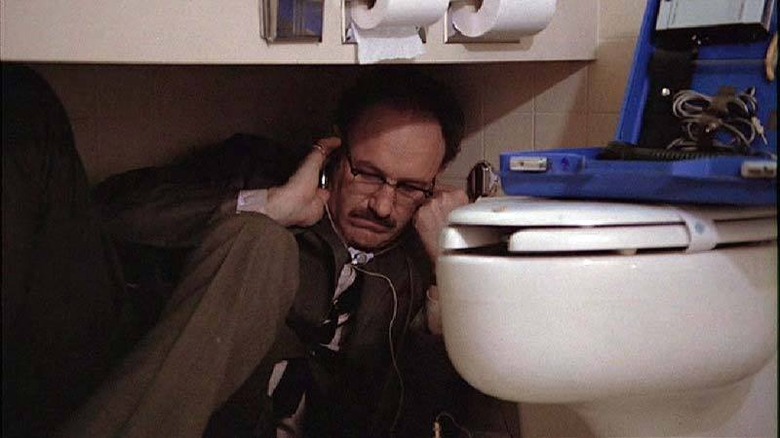
There might be better Francis Ford Coppola movies out there, but "The Conversation" is without a doubt his coolest movie. Released within months of President Nixon's resignation in the aftermath of the Watergate Scandal, this is perhaps one of the only times that Coppola had his finger on the pulse of American political culture (even if it was more coincidence than anything else). "The Conversation" stars Gene Hackman as an awkward loner who makes a career out of eavesdropping on people, using high-tech surveillance equipment to record conversations for his various clients. (The surveillance equipment shown in the film is, again by amazing coincidence, the same that Nixon used to spy on political opponents.)
"The Conversation" taps into the widespread feelings of mistrust and paranoia experienced by the American public at the time. But its appeal resonates well beyond the immediate period of the film's release, largely because its sound and editing are an utter triumph, providing a visceral sense of unease as Hackman's Harry Caul parses through his recordings to discover a deeply disturbing conversation.
Peggy Sue Got Married
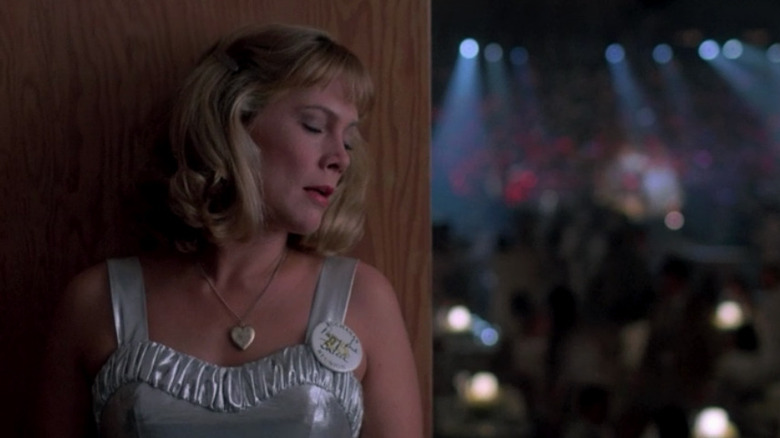
Who amongst us hasn't thought about what it would be like to go back to high school, knowing what we know now? It's a prospect that is as intriguing as it is daunting, and it likely stirs up complicated emotions for most people. In "Peggy Sue Got Married," a woman (Kathleen Turner) about to divorce her cheating high school sweetheart (Nicolas Cage) is unceremoniously transported back to senior year while in the middle of her 25th high school reunion.
Coppola uses this narrative structure not as a form of wish fulfillment, but an examination of life and regret. Films in the 1980s were heavily influenced by the exploitation of nostalgia, but although "Peggy Sue Got Married" takes place in 1960, the central theme is one of disillusionment with the past. Peggy Sue reconciles her own youthful decisions with the impact they've had on her life, both positive and negative. "Peggy Sue Got Married" is an introspective, mature dramedy that shows Coppola's deftness in a variety of genres.
The Godfather Part II
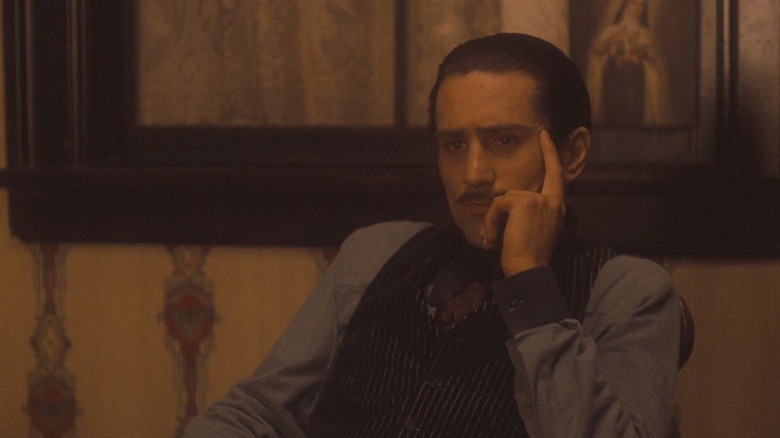
In the world of franchise filmmaking, it's incredibly rare that a sequel manages to be just as good as the original, especially when the original is as unrelentingly brilliant as "The Godfather." But somehow, "The Godfather Part II" pulls it off. We say "somehow," but it's not exactly a secret why the film is so good: It's almost entirely down to Robert De Niro's incredibly understated performance as the young Vito Corleone, several decades before the events of "The Godfather."
Oftentimes, giving a backstory to a character like the Godfather, who has an almost mythical quality, ends up being a disappointment. When you learn more about them, the veil is dropped, and they seem more ordinary. This is not the case in "The Godfather Part II." Seeing Vito Corleone as a young immigrant, struggling to provide for his family in 1917 New York City while being gradually introduced to the criminal underworld, helps us to understand not just him, but the trajectory of the entire Corleone clan.
1. The Godfather (1972)
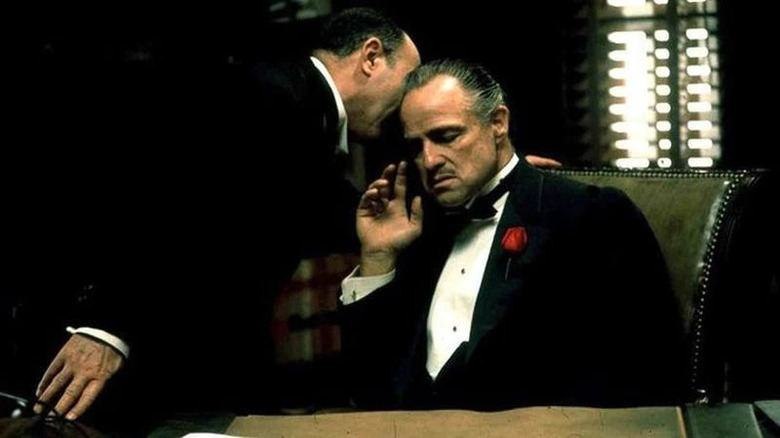
There will always be a conversation about whether the first or second Godfather film is the best, and there are arguments to be made for both. But in terms of sheer cultural impact, we have to put the groundbreaking "The Godfather" in the number one slot. This is Coppola operating at the absolute highest level, combining the epic tone he would become known for with a sense of intimacy. It follows the Corleones, a massive Mafia family running an international criminal organization, but it never loses sight of the fact that, at the end of the day, it still is just about a family, with all of the interpersonal conflict that implies.
"The Godfather" would cement Al Pacino's reputation as one of the greatest American actors, playing the role of the clever, reluctant Michael Corleone, who is desperate to lead a life separate from his family's criminal enterprises, but is perpetually sucked back in. His struggles to define himself within the Corleone family, combined with the now iconic presence of Marlon Brando as the Godfather himself, make this one of the most powerful and emotionally evocative films in American cinema.
Read this next: The Best Movies Of 2021 So Far
The post Every Francis Ford Coppola Feature Ranked from Worst to Best appeared first on /Film.
0 Comments